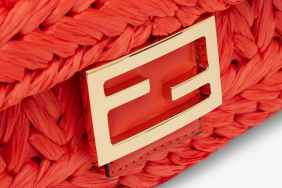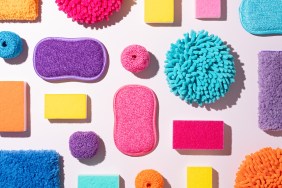We all know that wearing heels isn’t the best thing you can do for your health. Which is why we’ve all enjoyed the popularity of summer’s “It” shoe, the Birkenstock. But with fall’s wares hitting stores, it’s time to strap on some height again. (And even the sensible heels are high this season.) Before you sigh about pinched toes, aching soles and throbbing heels, we’ve dug up some tips on how to make heels more comfortable and help you be pain-free.
Pitch Perfect
The slant of a shoe’s sole is called the pitch. And all you need to know about it from a consumer perspective is the steeper the pitch, the more your feet will hurt at the end of the day. Of course, higher heels have a pitch with a steeper land, but it’s worth it to pay attention specifically to that part of the shoe, regardless of heel height. You’ll find some heels comparatively have a more gentle slope.
[ The 5 Most Comfortable Heel Brands on the Planet ]
Walk This Way
Posture is important for so many reasons. Not only does it make you look as beautiful and confident as possible, it helps you keep a strong, even stride that prevents heavy clomping that can make heels hurt even more. Think of yourself as a perfectly postured ballerina the next time you’re going around in heels. A hop to your step rather than a heavy pounding makes a marginal difference.
Shape Matters
The shape of what matters? Well, a few things actually. The shape of your foot matters; be honest with yourself if you have a wider foot and buy wider widths, solely for your comfort level and foot health. But also pay attention to the shape of the heel and the toe box of your shoes. Thankfully, high heels are no longer relegated to pointy-toed stilettos. There are so many options, and a thicker heel will always provide you with more comfort, as will a platform sole. And don’t think wedges are a comfort go-to. High, thin wedges can be just as painful as a thin heel, so opt for chunky when you can.
As for the toe box of the shoe, you may not want to go square and look too Puritan or elderly. There’s a more comfortable shape we can all get behind — the almond toe. A cross between Minnie Mouse round and witchy-pointy, the slightly rounded almond toe is chic and sophisticated. Of course, if you can’t resist the point every now and then, we won’t hold it against you. But they should be the exception rather than the rule.
[ On Your Feet All Day? Here’s What to Look for in a Heel ]
The Truth About Moleskin and Insoles
We’ve all seen these products at the drugstore, but do they really work? Yep. Moleskin is actually a type of cotton that provides traction you’ll never get from a standard bandage (those fall off with too much rubbing and sweat). A Moleskin strip or roll will protect your skin from blisters and provide some added comfort. Gel insoles placed where the ball of your foot rests in your shoe can make a big difference, considering that’s where much of the pain comes from. The more you walk, the more the fat in that part of your foot gets pushed aside, exposing sole to hard bone underneath. But, more on that in a minute. One of our favorite drugstore product for protecting skin in a new pair of shoes is Band-Aid’s FRICTION BLOCK Stick. Put it wherever a blister threatens, and you’re virtually guaranteed to be blister-free.
You Get What You Pay For
The cheaper the heel and the cheaper the materials, the more pain you’ll have to endure. Genuine leather forms to your foot and provides flexibility that less expensive shoes made of plastic never will. So, bargain buy at your own risk. That said, an expensive pair can fit you poorly. Spending the money never guarantees fit.
Tape Your Toes
According to the fashion blog WhoWhatWear, taping your third and fourth toes together is a legitimate way to stop heel pain. Why? The site says it prevents a nerve from being agitated between those two toes while wearing heels. We’ll be testing this come NYFW!
[ 8 Things Women Who Hate High Heels Will Understand ]
The Cobbler Is Your Friend
Keeping your shoes in good repair helps save your feet. When a heel lift wears down, get it replaced. When a sole wears out or loses its traction, have the cobbler restore it. Cobbler’s fees are actually very affordable from shoe stretching to minor repairs. And here’s a trick you may not know about: They can cut a heel down for you and replace the lift as if it never happened. So, if you must have a certain pair you love, but don’t need it to be five inches high; they can, on average, take off about an inch without it being obvious.
Inject Your Feet (?)
A cosmetic procedure called a “heel lift” has become more popular in recent years, though it has been around for some time. You’ll need to go to a dermatologist or plastic surgeon to get the bottom of your foot injected with fillers. That’s right, fillers, similar to the ones that are meant to plump out a face that’s showing unwanted signs of aging. This procedure, which includes numbing cream and an injectable numbing agent to relieve its own pain potential, may require more than one visit. You can read more about it in this article.






